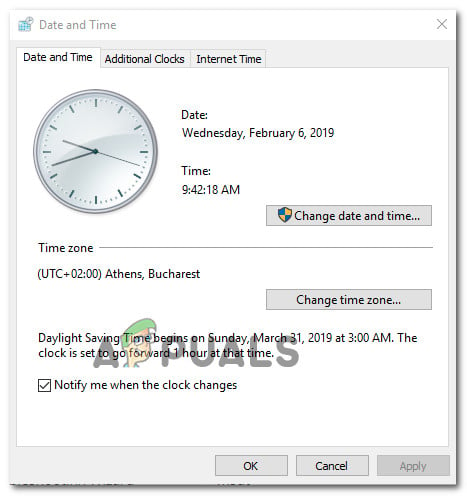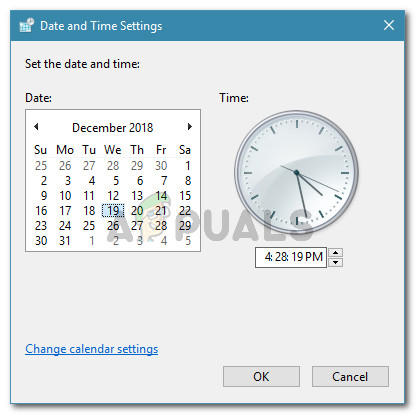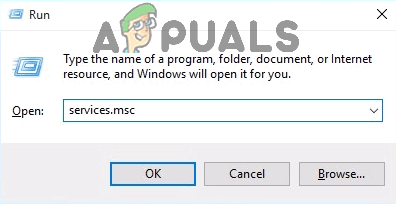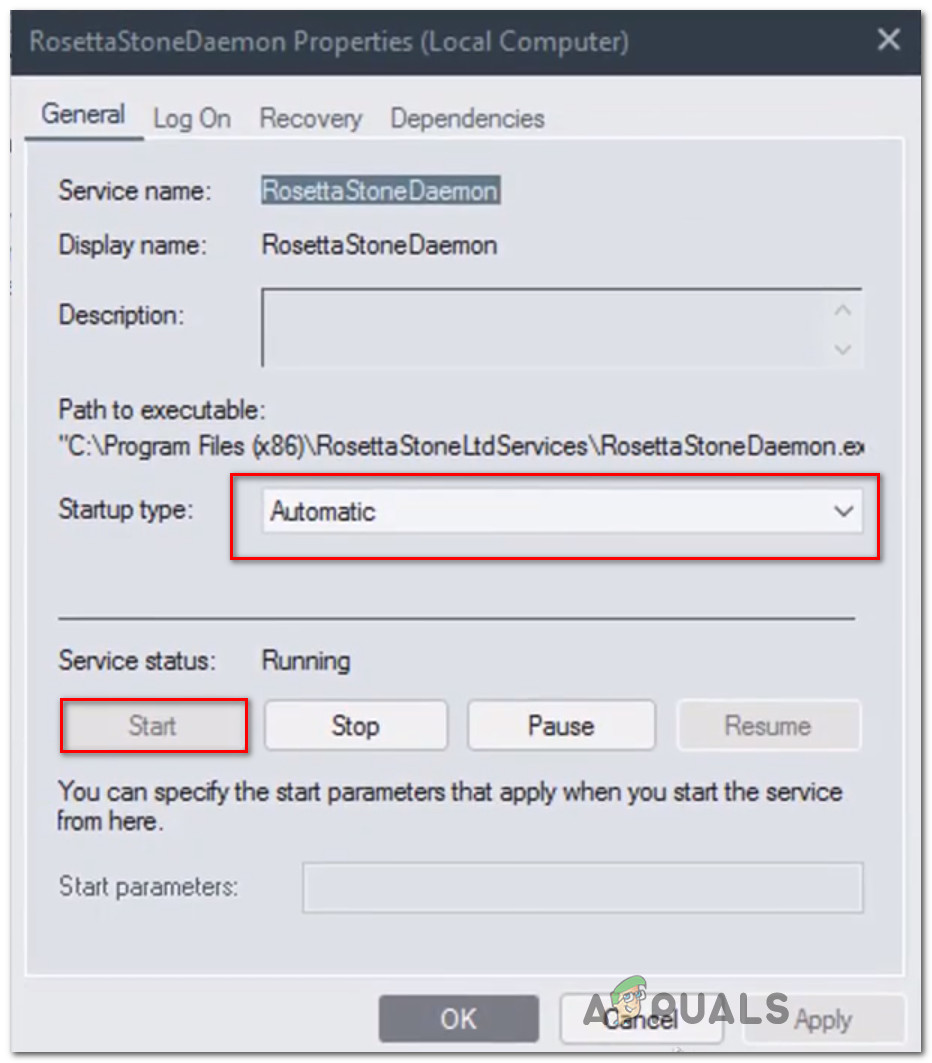[FIX] Rosetta Stone ‘Fatal Application Error 1141’
The Fatal Application Error 1141 is encountered by Windows users after their Rosetta Stone application and closes unexpectedly. This problem is confirmed to occur on Windows 7, Windows 8.1, and Windows 10.

As it turns out, there are several different causes that might cause this error code right before the Rosetta Stone application crashes:
- The system doesn’t meet minimum requirements – If you’re seeing this error on an older PC configuration, you should start by ensuring that your computer meets the minimum configuration. If you don’t meet the minimum specs, the program will not work on your PC.
- Incorrect system’s date & time – One of the most common reasons that will trigger this error with Rosetta Stone applications is incorrect date & time. As it turns out, each of their applications includes a timestamp check that will control-crash the app in case the time is way off – this is enforced for anti-piracy reasons. If this scenario is applicable, you should be able to fix the issue by setting the correct time & date in your Windows settings.
- 3rd party AV interference – As it turns out, 3rd party interference (created by a firewall or antivirus) can also force the application to trigger this error code after it’s prevented from communicating with the external servers. In this case, you can fix the problem either by disabling real-time protection or by uninstalling the 3rd party AV.
- RosettaStoneDaemon service is disabled – Another reason that might spawn this problem is when the main service used by Rosetta Stone (RosettaStoneDaemon) is disabled by default or not prevented to run. In this case, you can fix the issue by force-starting it via the Service screen.
Prerequisite: Checking the Minimum Requirements
If you’re encountering this issue with a very old PC configuration, it’s possible that the Rosetta Stone application is crashing due to the fact that you do not meet the minimum requirements.
The minimum specs supported by the programs are on the extreme low end – you should have no trouble running the program if you brought your computer in the last 6-7 years.
Here are the Hardware & Operating Requirements for PCs:
- OS: Windows: Windows 7, Windows 8, Windows 10 or higher
- Software: Internet Explorer 11 + Latest version of Adobe Flash Player
- CPU: 2.33GHz or faster x86-compatible processor OR Intel® Atom™ 1.6GHz or faster processor for netbooks
- Memory: 1 GB of RAM or higher
- Minimum Screen Resolution: 1024 x 768 display resolution
In case you’re certain that your computer meets the minimum requirements, move down to the next potential fix.
Method 1: Setting the Correct Time & Date
This is one of the most common reasons that will spawn the Fatal Application Error 1141 with Rosetta Stone applications. In most cases, the crash occurs after a failed date & time verification.
For copyright reasons, the developers of the Rosetta Stone app programmed it to close itself forcefully if the date & time check fails (this only occurs if the values are way off). If this scenario is applicable in your particular situation, you should be able to fix the problem by accessing the Date & Time settings on your Windows computer and changing the date, the time and the timezone to the correct values.
IMPORTANT: In case you already tried to change the date & time to the correct values but you noticed that the changes are reverted at every startup, chances are you’re dealing with a faulty CMOS battery. In this case, you will need to reinsert or replace the CMOS battery before following the instructions below.
In case you noticed that your date & time is off and you want to correct it, follow the instructions below:
- Press Windows key + R to open up a Run dialog box. Next, type ‘timetable.cpl’ inside the text box and press Enter to open up the Date & Time window.

Opening the Date and time window - Inside the Date & time window, use the horizontal menu at the top to click on Date & Time, then click on Change date & time button.

Setting the correct date & time Note: When you’re prompted by the UAC (User Account Control), click Yes to grant administrative privileges.
- At the next screen, start by using the calendar module to set the appropriate date, then modify the time value according to your particular timezone. Once the modification are completed, click Ok to save the changes.

Modifying Time & date - Next, launch the Rosetta Stone app once again and see if the problem is now resolved.
In case the program still crashes with the same Fatal Application Error 1141, move down to the next potential fix below.
Method 2: Disabling / Uninstalling 3rd party Antivirus (if applicable)
If you’re using a 3rd party security suite like a system-level firewall or a fully-fledged antivirus, it’s possible that an overprotective suite is blocking the connections that the Rosetta Stone application needs to function properly.
There are several 3rd party AV suites that are known to cause this problem. Here are a few that we’ve managed to identify based on user reports: AVG, Avast, ESET, Malwarebytes PRO, and ESET Nod32.
If this scenario looks like it could be applicable, you have two ways forward – You can either disable the real-time protection while using Rosetta Stone or you can uninstall the 3rd party suite altogether.
If you choose the first option (disabling the real-time protection), you can typically do it directly from the tray bar icon of your AV solution. Simply right-click it and see if you can find an option that disables the real-time protection.

Note: The exact steps of doing this will be different depending on the AV suite that you’re using.
In case this is not satisfactory or you’re using a 3rd party AV with a firewall component, you’ll need to uninstall the security component altogether & remove any remnant files to ensure that it’s not interfering with Rosetta Store. Here’s a quick step by step guide on how to do this:
- Press Windows key + R to open up a Run dialog box. Next, type ‘appwiz.cpl’ and press Enter to open up the Programs and Features menu.

Type appwiz.cpl and Press Enter to Open Installed Programs List - Once you’re inside the Programs and Features menu, scroll down through the list of installed programs and locate the overprotective AV suite that you want to uninstall. When you see it, right-click it and choose Uninstall to get rid of it.

Uninstalling your antivirus - Inside the uninstallation screen, follow the on-screen prompts to complete the uninstallation procedure.
- Once the process is complete, restart your computer and wait for the next startup to complete.
- After your computer boots back up, ensure that you remove any remnant files from your security suite, then launch Rosetta Store once again and see if the problem is now fixed.
In case the same problem is still occurring, move down to the next potential fix below.
Method 3: Force-starting the RosettaStoneDaemon service
If none of the potential fixes above have worked for you, you should investigate to see if the main service used by Rosetta Stone (RosettaStoneDamon) is allowed to run and configured to start at every system startup.
Several affected users have reported that they were able to fix the problem by accessing the Services menu and modifying the default behavior of the RosettaStoneDamon service.
In case this scenario is applicable, follow the instructions below to force start the RosettaStoneDaemon service to fix the Fatal Application Error 1141:
- Press Windows key + R to open up a Run dialog box. Next, type ‘services.msc’ inside the text box and press Enter to open up the Services screen.

Type “services.msc” into the Run dialog and press Enter - Inside the Services screen, move over to the right-hand section, scroll down through the list of services and locate the one named RosettaStoneDaemon.

Locating the Rosetta Stone service - Once you locate the service, double-click on it (or right-click and click on Properties). Next, once you’re inside the Properties screen, click on the General tab and change the Startup Type to Automatic delayed.
- After you do this, click on Start to force start the service, then click Apply.

Modifying the behavior of the Rosetta Stone service - Launch the Rosetta Stone app once again and see if the issue is now resolved.





